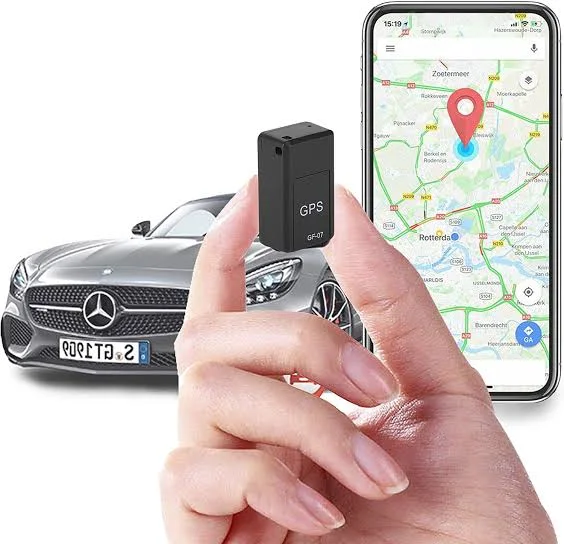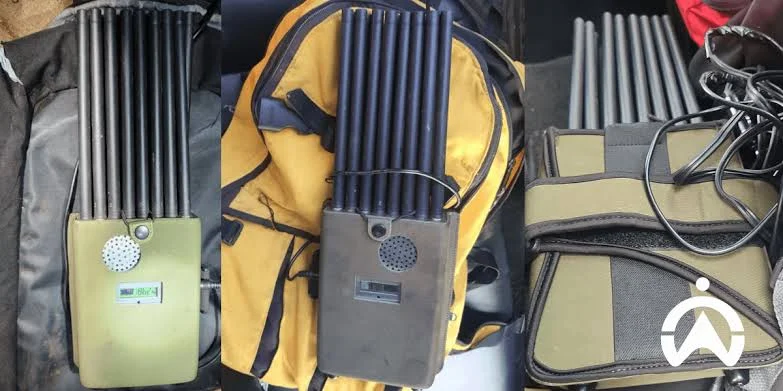One car is stolen every 37 seconds in the United States. But here's what will shock you: even with GPS trackers installed, modern thieves are making your $50,000 SUV disappear faster than you can say "where's my phone?"
The weapon of choice? A simple $30 signal jammer that fits in a backpack.
The National Insurance Crime Bureau reports that 850,000 vehicles were stolen in 2024, and despite the widespread adoption of GPS tracking technology, recovery rates remain frustratingly low. Why? Because criminals have adapted faster than our security measures.
The 20 Second BMW Heist That Changed Everything
Last November, security cameras captured a chilling scene in a quiet suburban driveway. Two men approached a $120,000 BMW X6 M. No broken glass. No hotwiring. No dramatic getaway. Within 20 seconds, they drove away with the vehicle as if they owned it.
The method? A relay attack combined with GPS jamming technology. One thief positioned himself near the house with a signal amplifier, capturing the key fob's signal from inside the home. His partner, standing by the car, used a transmitter to relay that signal to the vehicle's systems. The car unlocked and started instantly.
- But here's the crucial part: before driving away, they activated a GPS jammer. The $5,000 tracking system the owner had professionally installed? Completely neutralized.
This wasn't an isolated incident. Similar thefts have been documented across major cities, with luxury vehicles disappearing at an alarming rate. The FBI reported a 42% increase in motor vehicle theft incidents from 2019 to 2023, with the rate jumping from 199.4 to 283.5 incidents per 100,000 people.
The Science Behind the Crime
GPS jammers operate on a deceptively simple principle. They emit radio frequency signals on the same frequencies used by GPS satellites (1.575 GHz for civilian GPS). When activated, these devices create what's essentially electronic noise that drowns out legitimate satellite signals.
Think of it like trying to have a conversation in a crowded restaurant. The GPS receiver in your car is attempting to "hear" signals from satellites 12,000 miles above Earth. The jammer, positioned just feet away, broadcasts a much stronger signal that completely overwhelms the satellite communication.
Most consumer grade GPS jammers have an effective range of 5 - 10 meters, but professional-grade devices can block signals within a 100 meter radius. The devices are small enough to fit in a cigarette pack, run on rechargeable batteries, and can operate for hours without detection.
According to Cartrack's research, signal jammers can prevent a vehicle's telematics or tracking device from communicating its location to service providers, effectively making a tracked vehicle invisible to monitoring systems.
The Keyless Entry Vulnerability
Modern vehicles with keyless entry systems have created an unexpected vulnerability. These systems, designed for convenience, broadcast a constant low-power signal to detect when the key fob is nearby. Criminals exploit this feature using relay attacks.
The process requires two people working in coordination:
- The signal capturer positions themselves near the target's home with a device that can detect and capture the key fob's signal from up to 300 feet away. Modern key fobs continue transmitting even when not in use, making them detectable through walls and windows.
- The signal transmitter stands by the target vehicle with a device that receives the captured signal and retransmits it to the car's systems. The car's computer believes the legitimate key is present and allows the doors to unlock and the engine to start.
Research from the University of Birmingham demonstrated that criminals can successfully execute relay attacks on keyless entry systems, effectively bypassing security measures without physical access to the actual key.
Real World Case Studies
The Toronto Luxury Car Ring
In 2023, Toronto police uncovered a sophisticated car theft operation that specifically targeted vehicles with keyless entry systems. The group used relay attack equipment combined with GPS jammers to steal over 200 luxury vehicles worth $15 million. They focused on BMW, Mercedes-Benz, and Lexus models, often completing thefts in under 60 seconds.
The Houston Truck Theft Epidemic
Fleet managers in Houston reported a 300% increase in commercial vehicle thefts despite having GPS tracking systems installed. Investigators discovered that thieves were using portable jammers to disable tracking during the theft process, then removing or destroying the GPS units before the jamming effect wore off.
The Prius Paradox
While Toyota Prius vehicles are frequently targeted for catalytic converter theft, they've also become victims of a different type of crime. Thieves discovered that many Prius owners install aftermarket GPS trackers in easily accessible locations. Using handheld RF detectors, criminals can locate these devices and either remove them or jam their signals during theft attempts.
The GPS Jammer Underground Market
The illegal GPS jammer market has exploded in recent years. Devices that once cost hundreds of dollars are now available for under $50 through online marketplaces. Many are disguised as legitimate electronics or auto accessories.
Common jammer types include:
- Cigarette lighter jammers: Plug into the vehicle's 12V outlet and jam signals within a 5 meter radius
- Handheld units: Portable devices with 2 - 4 hour battery life and adjustable power settings
- Vehicle mounted systems: Permanent installations that can jam multiple frequency bands simultaneously
The devices often jam more than GPS signals. Many also block cellular communication, Wi-Fi, and Bluetooth connections, creating a dead zone around the stolen vehicle.
Detection and Defense
Modern anti-theft systems are evolving to combat these threats. Advanced GPS trackers now include jamming detection capabilities that trigger alerts when signal interference is detected.
Anti Jamming Technology
Next-generation tracking systems use multiple communication methods. If GPS signals are jammed, the device can switch to cellular towers, Wi-Fi positioning, or even inertial navigation systems. Some systems store location data internally and transmit it once jamming stops.
Faraday Pouches and Signal Blockers
For keyless entry protection, Faraday pouches have proven highly effective. These specially designed bags block all electromagnetic signals, preventing relay attacks. Testing shows that quality Faraday pouches can reduce key fob signal strength by 99.9%. [Carwow Faraday Bag Guide](https://www.carwow.co.uk/guides/running/what-is-a-faraday-bag)
Multi Layer Security Systems
The most effective approach combines multiple security measures:
- Physical barriers (steering wheel locks, kill switches)
- Electronic systems (alarms, immobilizers)
- Tracking technology (GPS, cellular, satellite)
- Signal protection (Faraday storage, motion-activated key fobs)
What You Can Do Right Now
Immediate Actions:
- Store keys properly: Keep key fobs in a Faraday pouch or metal container when at home
- Update your habits: Never leave keys near doors, windows, or external walls
- Install physical deterrents: Visible security measures like steering wheel locks deter opportunistic thieves
- Upgrade your tracking: Choose systems with anti-jamming features and multiple communication methods
Advanced Protection:
- Install a hidden kill switch that prevents the engine from starting
- Use tracking devices with motion-activated alerts
- Consider professional installation of covert GPS units in difficult-to-access locations
- Implement layered security with multiple independent systems
For High-Value Vehicles:
- Professional security assessments can identify vulnerabilities
- Custom immobilizer systems that require unique activation sequences
- Biometric security systems that verify driver identity
- Advanced alarm systems with cellular notification capabilities
The Future of Car Security
Manufacturers are beginning to address these vulnerabilities. BMW, Mercedes-Benz, and other luxury brands now offer motion-sensing key fobs that deactivate when stationary for extended periods. Ultra wideband (UWB) technology, which is harder to jam than traditional systems, is being integrated into newer vehicles.
However, criminals continue to evolve their methods. As one security expert noted, “It's an arms race between security technology and criminal innovation. The challenge is staying one step ahead.”
The key to protection lies in understanding these threats and implementing comprehensive security measures. Your car's built-in security features, while helpful, are no longer sufficient against determined criminals using modern technology.
Don't wait until you become a statistic. The 20-second BMW theft wasn't magic, it was preparation meeting opportunity. Make sure your vehicle isn't the next easy target.



Comments (0)
Please login to join the discussion
Be the first to comment on this article!
Share your thoughts and start the discussion